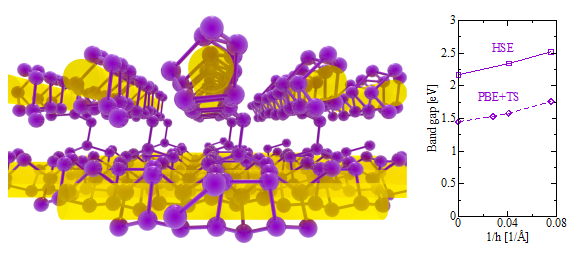The field of two-dimensional materials has seen enormous growth since the discovery of graphene, largely driven by the promise of exotic electronic properties that can be exploited in novel applications. Unfortunately many of the two-dimensional materials studied thus far exhibit either large band gaps or high mobilities but not both.
Scientists at Cambridge and EPFL have studied the properties of a single layer of violet, or Hittorf’s, phosphorus using first-principles density functional theory (DFT).
The single-layered form of Hittorf’s phosphorus is found to exhibit quite exceptional electronic properties. This two-dimensional material is predicted to have a large, direct band gap of around 2.5 eV and to have a very high hole mobility with an upper bound lying between 3000-7000 cm2 V-1 s-1. Being a direct semiconductor makes it very attractive for optical applications. In addition, the binding energy per layer is found to be very small (similar to graphite), suggesting that exfoliation may be experimentally possible.
The rare combination of properties in single-layered Hittorf’s phosphorus render it an exceptional candidate for use in future applications spanning a wide variety of technologies, in particular for high-frequency electronics and optoelectronic devices operating in the low-wavelength blue colour range.
Figure: The structure of single-layered Hittorf’s phosphorus and the band gap for different thicknesses of Hittorf’s phosphorus, going from bulk to its single-layered form.
Georg Schusteritsch, Martin Uhrin and Chris J. Pickard, "Single-Layered Hittorf’s Phosphorus: A Wide-Bandgap High Mobility 2D Material", Nano Lett. 16(5), (2016) pp 2975–2980

